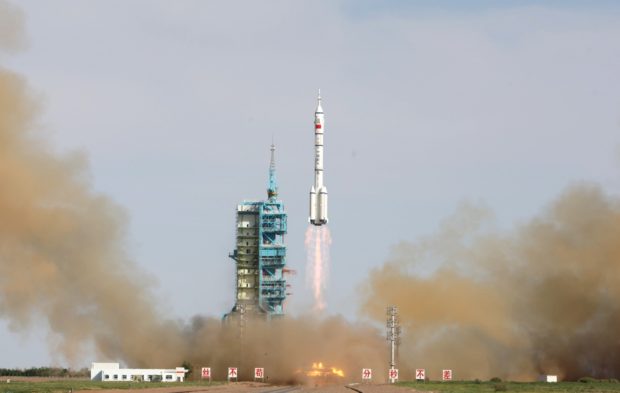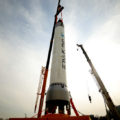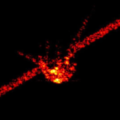Without any prior notice, China sent a Long March 4C booster aloft on Tuesday, April 10, carrying three Yaogan-31 spacecraft along with one microsatellite.
The launch was performed at 4:25 GMT (00:25 a.m. EDT) from the LC43 launch complex at the Jiuquan Satellite Launch Center (JSLC) in China’s Gansu Province.
Details of Tuesday’s mission as well as pre-launch preparations were kept under tight wraps by China. Beijing has not even released any NOTAM (Notice to Airmen) indicating that the launch was imminent.
Despite the information embargo, it is assumed that the flight most likely lasted for about 15-20 minutes ending in spacecraft separation. This assumption is based off the fact the satellites were delivered into a low-Earth orbit (LEO) by a Long March 4C booster.
Confirmation of the mission’s success came about one hour after liftoff. The successful delivery of the payload into space was announced by the state-run Xinhua press agency.
The primary payload of Tuesday’s mission was a trio of Yaogan-31 satellites, namely Yaogan-31 01A, 01B and 01C, each fitted with two deployable solar arrays.
However, detailed technical parameters of this group, as well as previous spacecraft in the series, were not disclosed by China. Xinhua insists that the newest triplet in the series will be employed for “electromagnetic environment surveys and other related technology tests.”
Contrary to official statements made by Beijing, Western analysts suspect that the Yaogan satellites’ purpose are of a military nature and employ either optical or synthetic aperture radar (SAR) sensors.
A report released in May 2016 by the National Institute of Advanced Studies located in Bangalore, India, suggests that the Yaogan satellites are part of an anti-ship ballistic missile (ASBM) system that Beijing is developing. The document states that “the Chinese have in place a robust space-based system that performs the location and tracking functions for the ASBM system.”
The first Yaogan spacecraft was launched in April of 2006, with the most recent Yaogan launch (prior to Tuesday’s flight) being carried out on January 25, 2018, when a Long March 2C rocket orbited three Yaogan-30 satellites.
Besides the three Yaogan-31 spacecraft, Tuesday’s mission also delivered one smaller satellite, whose identity remains undisclosed. Xinhua only informs that the fourth passenger of the flight was a “micro nano technology experiment satellite.”
The Long March 4C booster employed for Tuesday’s launch has a liftoff mass of an estimated 250 metric tons and is 150 feet (54.7 meters) in length with a diameter of 11 feet (3.4 meters). It is capable of delivering payloads of up to 4.2 metric tons to LEO, 2.8 metric tons to a Sun-synchronous orbit (SSO), and up to 1.5 metric tons into a geostationary transfer orbit (GTO).
Tuesday’s launch was the 271st orbital flight of the Long March rocket series overall and the 11th mission for China this year. Beijing’s next launch is currently scheduled to take place on April 21, when a Long March 3B booster is slated to deliver the Apstar 6C communications satellite into space.




